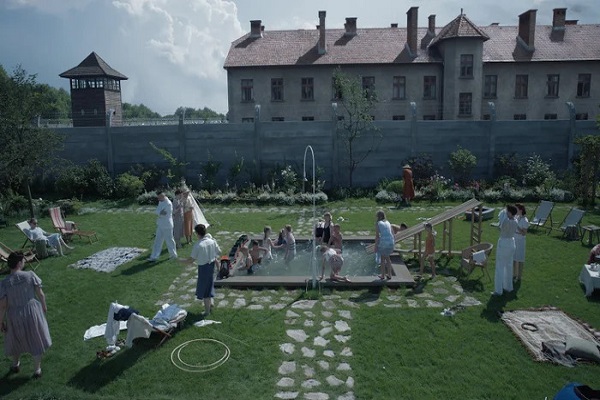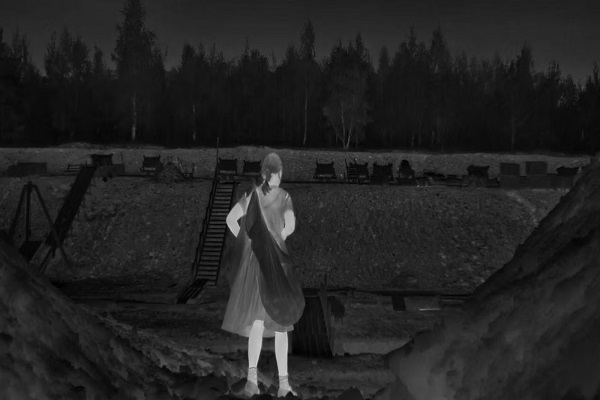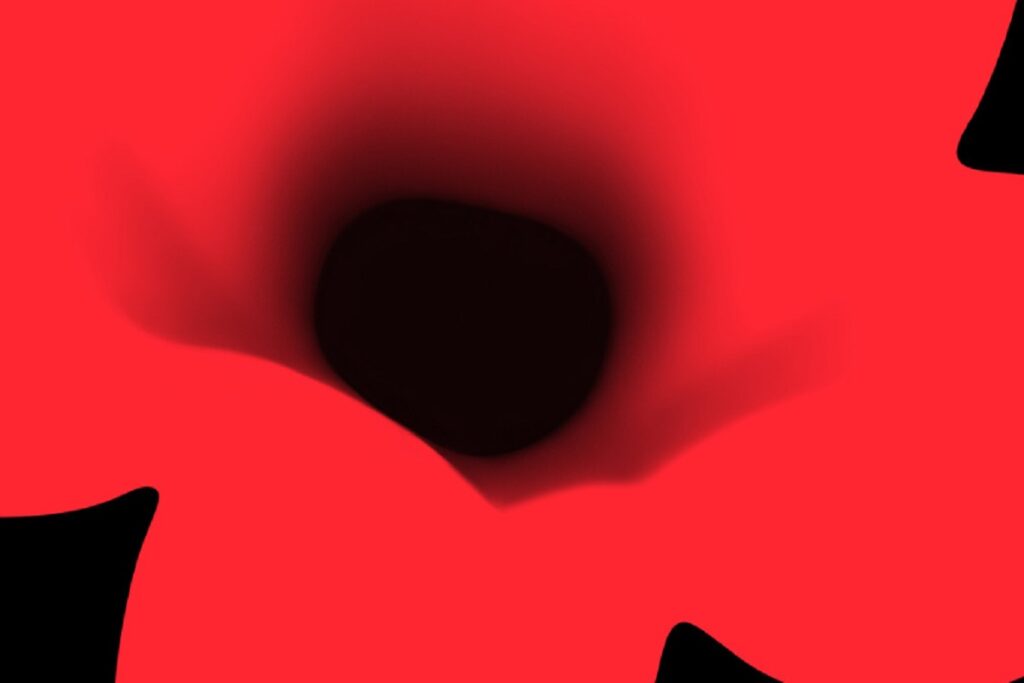The world is well aware of the atrocities committed on the Jews by the Nazi Germany under the dictatorship of Adolf Hitler. They massacred the lives of more than six million European Jews. In addition to that, they also brutally murdered numerous other minorities. Many films have been made on these massacres. Jonathan Glazer’s recent film The Zone of Interest is also based on this subject. However, the film’s structure differs from that of the other films. It makes the viewers feel the horrendous crimes committed by the Nazi forces without showing them on the screen. viewers can sense those spine-chilling incidents through the background sound used in the film. Though The Zone of Interest is loosely based on the novel of the same title written by Martin Amis, it does not feature the same characters. Instead, the real Rudolf Hoss and his family are featured in the film. Jonathan Glazer shows how a family lives happily in their little paradise when the worst atrocities are committed on the other side of the wall every moment. Is it a banality, mundanity, and normality of evil? Or something else? The Zone of Interest vividly shows when state-sponsored ideologies pierce human minds, humans can act and behave inhumanely.
The Zone of Interest starts in a different style. The title appears like burning and then it fades out very slowly. The black screen has a long pause with a haunting background score. At first, viewers hear a chaotic background sound that can disturb their minds. The chirping of birds gives them a hint from the start that something chaotic or haunting is in the background. Once the film starts, this tense, disturbing, and agitating music is always in the background.

The story is set in 1943. The commandant of the Auschwitz Concentration Camp Rudolf Hoss (Christian Friedel) lives happily with his family in a house next to the camp separated only by a wall. In his free time, he takes his children to a nearby river for fishing and swimming. The Hoss family has a picturesque garden inside their house, and the plants bloom beautiful flowers. Rudolf’s wife Hedwig (Sandra Huller) asks the housemaids to choose from the garments collected from the Jews murdered in the concentration camp. She selects a fur coat and sees her multiple times in the mirror. Hedwig also finds a lipstick in the coat pocket and tries it on her lips. She once found a diamond inside a toothpaste and refers to the Jews as ‘clever’. Representatives of the Topf & Sons company give a presentation to Rudolf regarding a new crematorium that can burn 500 dead bodies in just 7 hours. Rudolf approves the crematorium.
The Zone of Interest features some of the worst inhumane, nightmarish, and spine-chilling atrocities committed ever in this world. Rudolf’s sons have a collection of gold teeth extracted from the Jewish dead bodies. The body parts of the Jewish corpses are being carried away by the river stream. When the corpses are being burnt and cries of the Jews are being heard in the background, Rudolf Hoss stands still unconcerned and unemotional. At night, when he reads the German fairy tale Hansel and Gretel, a Polish girl secretly drops food into the cells of the concentration camp. Infrared images of the girl dropping food caught by a thermal camera are shown on the screen.
Hedwig’s mother comes to stay in her daughter’s house and gets fascinated by the house and the garden. She refers to the garden as ‘paradise’. Hedwig tells her that her friend Rudi refers to her as ‘The Queen of Auschwitz’. She also informs her that the Hoss family friends Billy and Willy praised them for doing the National Socialist duties diligently. A glimmer of the corpse-burning light from the concentration camp awakens Hedwig’s mother abruptly from her sleep. She gets up, looks through the closed window, sits on the chair, and tries to control her sob with a handkerchief. She leaves her daughter’s house unnoticed with a note.
Rudolf Hoss is a loving person to his horse but a cold-blooded monster to the Jews. He is promoted as the Deputy Inspector and transferred to Oranienburg near Berlin, Germany. Initially, he conceals this news from his family and appeals to the higher authority to stop the order. When he fails to stop it, he reveals it to Hedwig who is not ready to leave her little paradise. Though Rudolf has to leave, the higher authority allows his family to stay back in Auschwitz. Again, Rudolf reads the German fairy tale Hansel and Gretel to his daughter and the Polish girl drops food into the prison cells of the Concentration Camp. She discovers a song titled Sunbeams composed by a Jewish prisoner Joseph Wulf in1943 in Auschwitz 3 and plays it on piano – “Radiant and warm human bodies young and old, and we who are imprisoned here, our hearts are not yet cold, souls afire like the blazing Sun, tearing breaking through their pain, for soon we will see that waving flag, the flag of freedom is yet to come.”

Some incidents and dialogue in The Zone of Interest can boil our blood. When the housemaid Aniela forgets to remove the soiled cup and dish from the table, Hedwig calmly tells her during breakfast that she could have her husband spread Aniela’s ashes across the fields of Babice. When a prisoner in the Concentration Camp fights for an apple, he is ordered to be drowned in the river. Rudolf’s younger son hears the order, tries to look through the window, and utters casually without any fear, “Don’t do that again”. Hitler approves the deportation of 700000 Hungarian Jews to Auschwitz for extermination. Rudolf prepares to return to Auschwitz and contemplates how efficiently the Jews can be killed in gas chambers. He leaves his Berlin office and walks down the dark staircase.
In The Zone of Interest, Jonathan Glazer demystifies the demons of the holocaust. He shows that those monsters lived normal lives but diligently carried out inhumane activities being fully dedicated to Adolf Hitler, the Fuhrer. Rudolf Hoss was no exception. So, for this role, Jonathan Glazer selected Christian Friedel who looks normal even when contemplating how efficiently the Jews can be killed. Overall, he is a devoted family man. Sandra Huller never wanted to portray a character like Hedwig Hoss. However, she agreed to play Mrs. Hoss having a discussion with Jonathan Glazer and reading the script. She brilliantly portrays Hedwig’s satisfaction, rejoicing, vanity, and also indifference to the inhuman activities committed by the Nazi Germany forces including her husband. The Zone of Interest features multiple non-professional actors who justify their roles.
Cinematographer Lukasz Zal used 10 unmanned cameras for filming to remove any feeling of a camera operator or outside influence on the set. He and his team would hide the cameras in cupboards, in the corner of a room, or outside, and run cables for playback and control. There was no crew and only the most minimal film equipment was kept on the set. They drilled holes throughout the house to run the cables without being visible. Lukasz Zal and his team members wanted to create a real piece of life inside the house so that the actors could act without any influences or distractions. Everything was hardwired. When it was time to change cards, they would often remove the actors first so that they didn’t interact with the crew to maintain the authentic feeling for them. Cameras were set up using only the stand-ins. Ten cameras captured the essence of real life with transparent footage. Lukasz Zal and his team placed a large green screen behind the house to recreate the Concentration Camp in the background later in post-production. Though the Concentration Camp is visible in the film, nothing was shot inside the camp.
The shots in The Zone of Interest are not manipulative, aesthetic, or emotional. There are rarely any close-ups. It is an objective film that portrays the Hosses as normal humans, not mystified demons. Jonathan Glazer and Lukasz Zal have used mostly wide-angle long and mid shots throughout the film. Lukasz Zal and his team didn’t want the audience to feel as if somebody was behind the camera, so they only moved the camera when there was a reason to do it. The Zone of Interest was mostly shot in natural light, even at 12 pm and 1 pm. Night scenes were shot mostly in darkness with only bulbs of that time. Only practical lights were used without any reflectors, flags, and fill. Lukasz Zal and his team did not want the film to look vintage by manipulating the images using lenses. Instead, they made the film look sharp and contemporary. Lukasz Zal feels that the power of the image lies in contrast, composition, and framing, not in attractiveness. They kept the frames very geometric and used a lot of wide shots to establish a character in the surroundings.
The most important aspect of The Zone of Interest is the sound design by Johnny Burn. The film flows in two parallel tracks. On one track, the daily life of the Hoss family is shown. On the other track, the inhumane atrocities committed inside the Auschwitz Concentration Camp are heard. Director Jonathan Glazer makes the viewers feel those atrocities through the sound design instead of showing them directly on the screen. It is a film about showing without showing. Johnny Burn captured those sounds from practical sources. The sound design includes the sounds of the puffing of the trains, gunshots, military commands, the emission of smoke from the chimney, and the terrible screaming of the prisoners. The sound design terrorizes and anguishes the viewers of the horrendous fate of the numerous Jewish prisoners. Mica Levi’s haunting background score resonates with the horrific subject of the film. Even though Jonathan Glazer has used it only a few times, it creates a horrifying impact on the viewers.
Director Jonathan Glazer always wanted to make this film truthful and historically correct rather than beautiful. So, he avoided beautiful locations and shot in and around Auschwitz. Both Glazer and production designer Chris Oddy visited the real Hoss house in Auschwitz but could not select the house as it was old and not favorable for all the camera setup. So, they recced and found a house with similar architecture just 300 meters away from the real Hoss house. Chris Oddy researched numerous archives and pictures to make the house look like the original Hoss house. He even painted the interior in skin color to be historically correct. Most of the film was shot inside the house only. So, Chris Oddy’s production design is crucial to portray the story truthfully.
